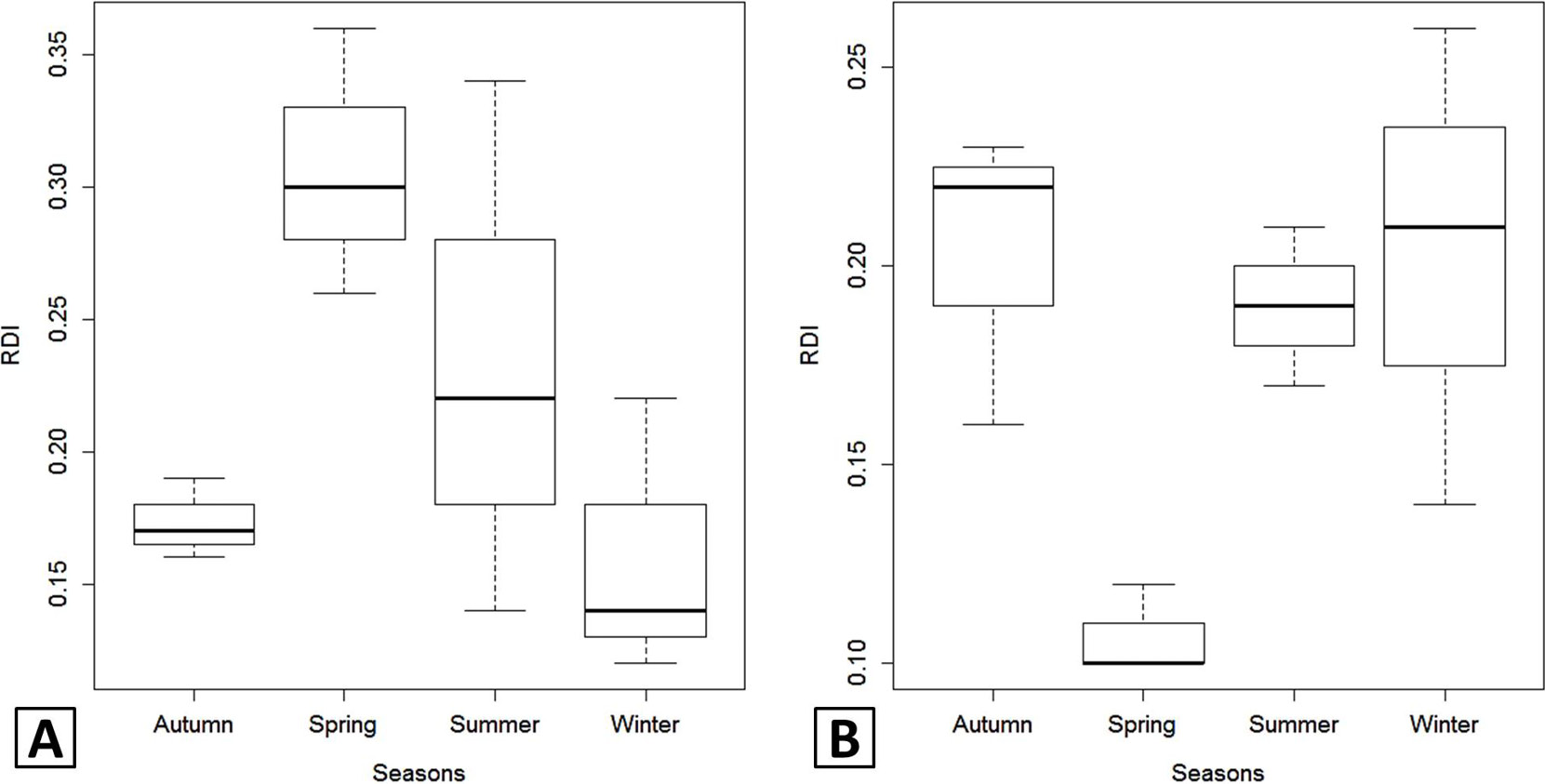Rodents (Muridae) Abundance and Habitat Shift between Agricultural, Non-Agricultural Land and Human Dwellings: A Proposed Strategy to Decrease Crop Damage
Rodents (Muridae) Abundance and Habitat Shift between Agricultural, Non-Agricultural Land and Human Dwellings: A Proposed Strategy to Decrease Crop Damage
Raja Imran Hussain* and Iqra Yousaf
The sketch of study area. Black squares area in fallow land are the trapping stations per habitat type.
Relationship between sampling months and total number of rodents captured per month in fields (crop, non-crop and fallow land) (▲) and human dwellings (○).
Number of rodents among four seasons in fields (crop, non-crop and fallow land) (A), and human dwellings (B). Different letters show significant relationship (p < 0.05) among seasons.
Relative density indexes (RDI) of rodents in the fields (crop, non-crop and fallow land) (A) and human dwellings (B) among seasons.
Number of rodents among four seasons in fields (crop, non-crop and fallow land) (A), and human dwellings (B). Different letters show significant relationship (p < 0.05) among seasons.
















